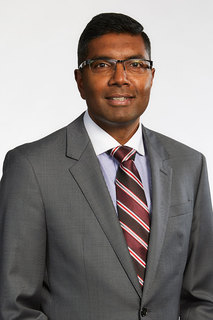I thought I would write a short blog about a trial in an OHS matter because these tend not to get a lot of press or reported in any court reports unless there is an appeal on a point of law.
This case ran for 5 weeks in the County Court of Victoria starting in February this year. It resulted in an acquittal for all three defendants.
Briefly the facts were that in around January 2008, Australand decided to build an enormous warehouse out in Dandenong South. They look a bit like a big Bunnings Warehouse. Australand let bits of the contract for the build out to various different parties. One of those parties was Steelfield Pty Ltd. Steelfield makes steel, that is, it gets steels members in and cuts them up to the right size and drills holes where they are meant to be. Then they arrange for it to be delivered to a particular site. The contract that Steelfield got from Australand though was for the manufacture of the steel pieces and also the erection of the steel that would go to make up the steel frame of the building. Because Steelfield didn’t have a steel erection crew it subcontracted the erection out to a one man company by the name of A & S Structural Welding Pty Ltd. The one band that ran A & S was a gentleman by the name of Gica Alecsa. Alecsa was the sole director and controller of A & S and he had a subcontracting crew of qualified steel riggers.
In March 2008 Steelfield was delivering steel to the site in Dandenong South and once it was arriving on site the A & S workers were putting it up – or as it is known in the industry – “rigging” it. The frame of the building that was going up comprised of hundreds of tonnes of steel all being suspended in the air from columns which ran down the outside and also up the middle. The outside columns were joined into the middle by rafters.
In between the rafters there were meant to be supporting bracing struts. The Australian Standards specified how many struts were meant to be in place. As construction went up of course not all of the struts were put into place.
On 2 April 2008 a heavy wind came up. The site was opened at about 6.00 a.m. and workers started to come onto the site. Two workers were walking underneath the structure getting ready to start work when the steel frame buckled and collapsed. It fell down and killed one of the riggers, Mr John Parton. The other worker miraculously escaped injury.
Worksafe Victoria brought action against:
(1) Australand as the builder;
(2) Steelfield as the person who had the contract to supply the steel and erect it;
(3) It also bought action against Gica Alecsa personally;
(4) And his company, A & S because they hadn’t done the steel erection properly.
There was never any question that the steel had failed because it had a particular defect in it, that is that it was too weak.
I was one of two barristers representing Steelfield. David Neal SC was my leader.
Australand pleaded guilty prior to committal however the other defendants Steelfield, A & S and Gica Alecsa all pleaded not guilty essentially on the basis that it was Australand who exercised all of the control in terms of the erection of the building and had control over the engineering components of it.
The case ran for five very long weeks. In many ways the parties focussed on the contractual documentation to the exclusion of the lay evidence which all seemed to agree. That lay evidence was that Steelfield would supply the steel to the site, it having been manufactured in accordance with the engineering designs done by Australand. Once on site the steel would be erected by A & S. A & S said that they were under the supervision of the Australand site personnel and also subject to any instruction given by the Australand engineers.
There was great debate as to the effect of the Baiada case. The Crown alleged that a direction should be given to the jury that Steelfield was guilty because there was a step it could have taken but did not (that step being better supervision of the A & S workers to ensure that enough bracing struts went up). The defence argued that Baiada stood for a proposition different to that. Not only was the step of supervising A & S one that Steelfield could have taken but furthermore according to Baiada it was a step which Steelfield should have taken. In these circumstances Steelfield said that while it could have given instruction to the A & S workers because they were qualified steel riggers it had no more expertise than they did and so should not have given them any instruction at all because they knew their jobs. The Judge made a ruling against Steelfield’s position on that point. It seems to be a point which will be agitated many times again by Worksafe when coming to interpret the effect of Baiada.
In any event the jury went out to consider its verdict and after a day’s deliberation came back and found all three defendants not guilty.
The real issue in the case was obviously control; the extent to which any of the defendants actually controlled the site irrespective of Australand’s contractual arrangements on paper, the fact that Australand had pleaded guilty and in fact had been exercising significant control on site, seemed in my view to be the critical factors.


